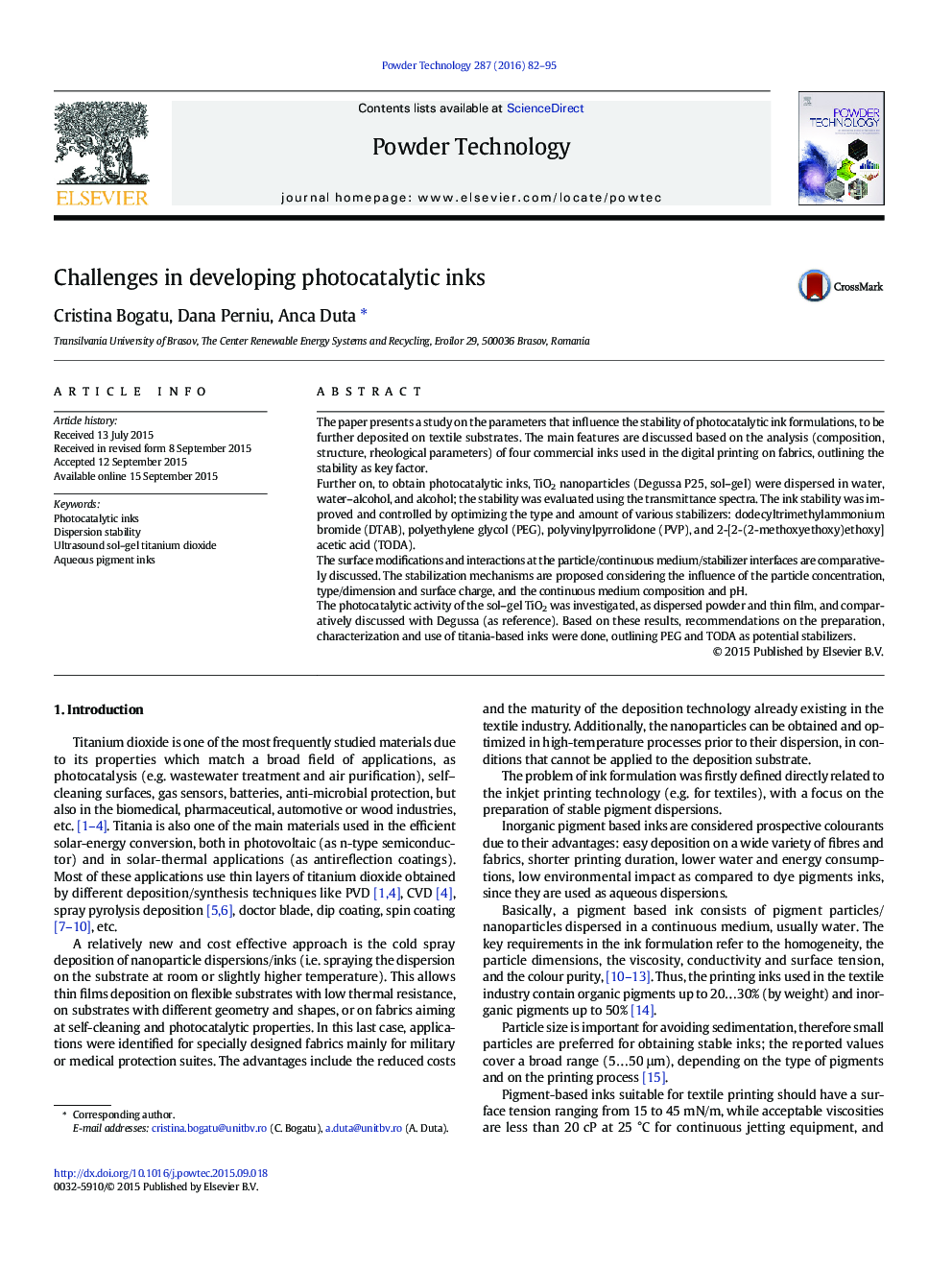| Article ID | Journal | Published Year | Pages | File Type |
|---|---|---|---|---|
| 235162 | Powder Technology | 2016 | 14 Pages |
•The properties of four pigment inks used in textile printing are investigated.•Titania photocatalytic ink stability is evaluated based on transmittance spectra.•Stability mechanisms for Degussa and sol–gel TiO2 dispersions are proposed.•TODA capping agent based anchoring mechanism provides the best stabilization.•The stabilized inks deposited on fabrics have good photocatalytic activity.
The paper presents a study on the parameters that influence the stability of photocatalytic ink formulations, to be further deposited on textile substrates. The main features are discussed based on the analysis (composition, structure, rheological parameters) of four commercial inks used in the digital printing on fabrics, outlining the stability as key factor.Further on, to obtain photocatalytic inks, TiO2 nanoparticles (Degussa P25, sol–gel) were dispersed in water, water–alcohol, and alcohol; the stability was evaluated using the transmittance spectra. The ink stability was improved and controlled by optimizing the type and amount of various stabilizers: dodecyltrimethylammonium bromide (DTAB), polyethylene glycol (PEG), polyvinylpyrrolidone (PVP), and 2-[2-(2-methoxyethoxy)ethoxy] acetic acid (TODA).The surface modifications and interactions at the particle/continuous medium/stabilizer interfaces are comparatively discussed. The stabilization mechanisms are proposed considering the influence of the particle concentration, type/dimension and surface charge, and the continuous medium composition and pH.The photocatalytic activity of the sol–gel TiO2 was investigated, as dispersed powder and thin film, and comparatively discussed with Degussa (as reference). Based on these results, recommendations on the preparation, characterization and use of titania-based inks were done, outlining PEG and TODA as potential stabilizers.
Graphical abstractFigure optionsDownload full-size imageDownload as PowerPoint slide
